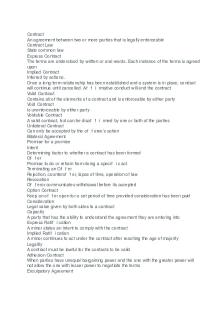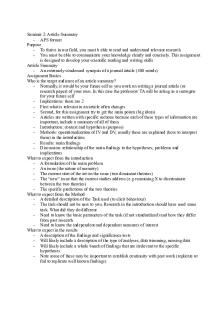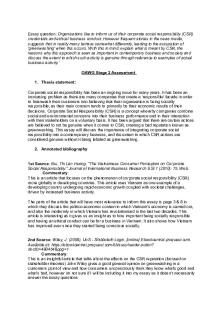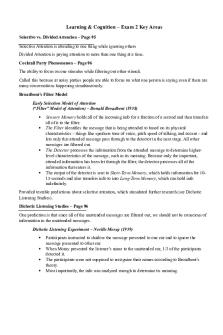2 - Lecture notes 2 PDF

| Title | 2 - Lecture notes 2 |
|---|---|
| Author | Kevin Shah |
| Course | Intrnet&Higher; Layer Pro |
| Institution | New Jersey Institute of Technology |
| Pages | 5 |
| File Size | 126.1 KB |
| File Type | |
| Total Downloads | 98 |
| Total Views | 219 |
Summary
Group Project and Networking Information ...
Description
Important Information/Assignments
Find out Tim Berners Lee’s original design goals for HTTP Programming project will be posted on Wednesday or Thursday By the end of this week, we should all have completed the Getting Started and HTTP sections: o Link: http://www-net.cs.umass.edu/wireshark-labs/
Due 2nd or 3rd week of October
Build a blocking proxy server for project The last week of the project is reserved for testing only, debugging is the week before that.
Monday 10/2/2017 – Project checkup Office Hours:
Thursday: 11am – 1pm and 2:30pm – 5pm Friday: 1pm – 4pm
When doing the programming project -
Every group should try and build the tcp server client example Modify the client server program, change the port that it listens to, currently listens to servport 9877
GETADDRINFO UNP Book - Unix Network Programming Volume 1 by W. Richard Stevens - unpbook.com telnet afsaccess1.njit.edu 9877 tcpserv01.c Unix network programming volume 1 chapter 5 Start it this week! TCP Client Server Example Read chapter 3, 4, 5, and 7 Project can be done in C or in Java If project crashes or doesn’t work, you get a 0
Lecture Chapter 1 Protocol “Layers”: -
Hosts Routers Links of various media
Why are protocols organized in layers??
When you’re in the network layer, do you care whether it goes by air or sea? -
“No, it shouldn’t matter”
5 layers -
-
1. Physical Physical bits on the wire 2. Link 3. Network 4. Transport 5. Application FTP, SMTP, HTTP, WhatsApp,
“These layers come together in the end-to-end principle” Network Security -
Networks were not designed with security in mind o A group of mutually trusted users
Analogy: How do you attack a mail room? -
In the physical world, we use armored delivery vans, with armed security guards to protect a package Roads aren’t safe
Malware -
-
Can get in host via: o Virus o Worms Spyware malware
Packet Sniffing: -
A sends a message to B, C can look at message over media
Faking Address: -
IP spoofing: send packet with false source address o Instead of putting your real name you put an alias, and you send the packet with a malware. o When malware attached to packet is opened
The times that are mentioned on trace route are they one-way times? -
-
It is a round trip time, because o It’s got three round trip times, because the route to get to a particular destination may not be the same. It averages the time to get to the destination and determines the best way there Servers may go up or down Is it possible to get a one-way time?
Chapter 2: Creating a network app -
When you are writing programs, you only care about putting the message on the wire
Sockets: What is a process? -
Running instance of program
What processes can be classified as network apps? -
Browser
The identifier of a process is called a socket. -
Socket analogous to door There is a socket ID because not all processes you a network app, your socket is connected to another socket that is mutually sharing the process with you.
Steps when connecting to webserver: 1. nslookup www.princeton.edu a. IP Address of Princeton 2. Go to browser
3. netstat | grep 140 4. netstat -n | grep 140 a. You will see two sets of numbers, “interpret (look at chart 2-10) by looking at the first part (Local Address) or your IP address (32 bit number) that identifies your host to your computer (chart 2-11) the second part contains the address of the other host you’re connecting to (Foreign Address). b. Local socket number is right next to your IP address c. Socket of the host you are connecting to is right next to their IP address
1. nslookup www.flinders.edu.au a. Notes IP address of flinders 129.96.88.52 2. Go to browser a. Access the webpage 3. Netstat -n | grep 129 4. Netstat -n | egrep -e “140|129”
1. nslookup gaia.cs.umass.edu 2. netstat -n |
telnet gaia.cs.umass.edu 80 -
His computer will connect to gaia via telnet on port 80 Your socket number will be a randomly assigned number from range of 0 to 65,535 o The local port is always a randomly assigned number
GET / HTTP/1.0 (chart 2-27) -
HTTP request message When it hits gaia it sends back a HTTP response message (chart 2-31) Time stamp gives you time Do this after you log into afs**
“2 HTTP requests means 2 connections”
Non-persistent HTTP -
At most one object sent over TCP o Connection then closed RTT: Time for a small packet to travel from client to server and back 1. HTTP client initiates TCP connection to HTTP server at www.name.edu on port 80 1b. HTTP server “accepts” connection, notifying client 2. HTTP client sends HTTP request message (containing URL) into TCP connection socket 3. HTTP server receives request messages, forms response message containing requested object, and sends message into its socket. 4. HTTP server close TCP connection 5. HTTP client receives response message containing html file, displays html. Parsing html file, finds 10 referenced jpeg objects 6. Step 1-5 repeated for each jpeg object
Persistent HTTP -
Multiple objects can be sent over by single TCP connection between client, server
Web caches (proxy server) -
CFW Proxy server intercepts every request o Looks at every request
Conditional GET The only way to ask what’s new is to use: -
HTTP request msg: If-modified-since: HTTP response: HTTP/1.0 304 Not Modified
-
HTTP request msg: If-modified-since:
-
HTTP response: HTTP/1.0 200 OK
The nslookup command is used to look up the ip address for a website DNS: services, structure
Pick up at chart 2-44...
Similar Free PDFs

2 - Lecture notes 2
- 5 Pages

Lecture notes, lecture 2
- 3 Pages

2 Biodiversity - Lecture notes 2
- 33 Pages

Chapter 2 - Lecture notes 2
- 30 Pages

Blaw 2 - Lecture notes 2
- 4 Pages

Chapter 2 - Lecture notes 2
- 4 Pages

Seminar 2 - Lecture notes 2
- 2 Pages

Stage 2 - Lecture notes 2
- 3 Pages

Micro 2 - Lecture notes 2
- 18 Pages

2 Sources - Lecture notes 2
- 4 Pages

Prof 2 - Lecture notes 2
- 3 Pages

Mast200 2 - Lecture notes 2
- 3 Pages

Quiz-2 - Lecture notes 2
- 7 Pages

Chapter 2 - Lecture notes 2
- 11 Pages

Chapter 2 - Lecture notes 2
- 4 Pages

Exam 2 - Lecture notes 2
- 5 Pages
Popular Institutions
- Tinajero National High School - Annex
- Politeknik Caltex Riau
- Yokohama City University
- SGT University
- University of Al-Qadisiyah
- Divine Word College of Vigan
- Techniek College Rotterdam
- Universidade de Santiago
- Universiti Teknologi MARA Cawangan Johor Kampus Pasir Gudang
- Poltekkes Kemenkes Yogyakarta
- Baguio City National High School
- Colegio san marcos
- preparatoria uno
- Centro de Bachillerato Tecnológico Industrial y de Servicios No. 107
- Dalian Maritime University
- Quang Trung Secondary School
- Colegio Tecnológico en Informática
- Corporación Regional de Educación Superior
- Grupo CEDVA
- Dar Al Uloom University
- Centro de Estudios Preuniversitarios de la Universidad Nacional de Ingeniería
- 上智大学
- Aakash International School, Nuna Majara
- San Felipe Neri Catholic School
- Kang Chiao International School - New Taipei City
- Misamis Occidental National High School
- Institución Educativa Escuela Normal Juan Ladrilleros
- Kolehiyo ng Pantukan
- Batanes State College
- Instituto Continental
- Sekolah Menengah Kejuruan Kesehatan Kaltara (Tarakan)
- Colegio de La Inmaculada Concepcion - Cebu